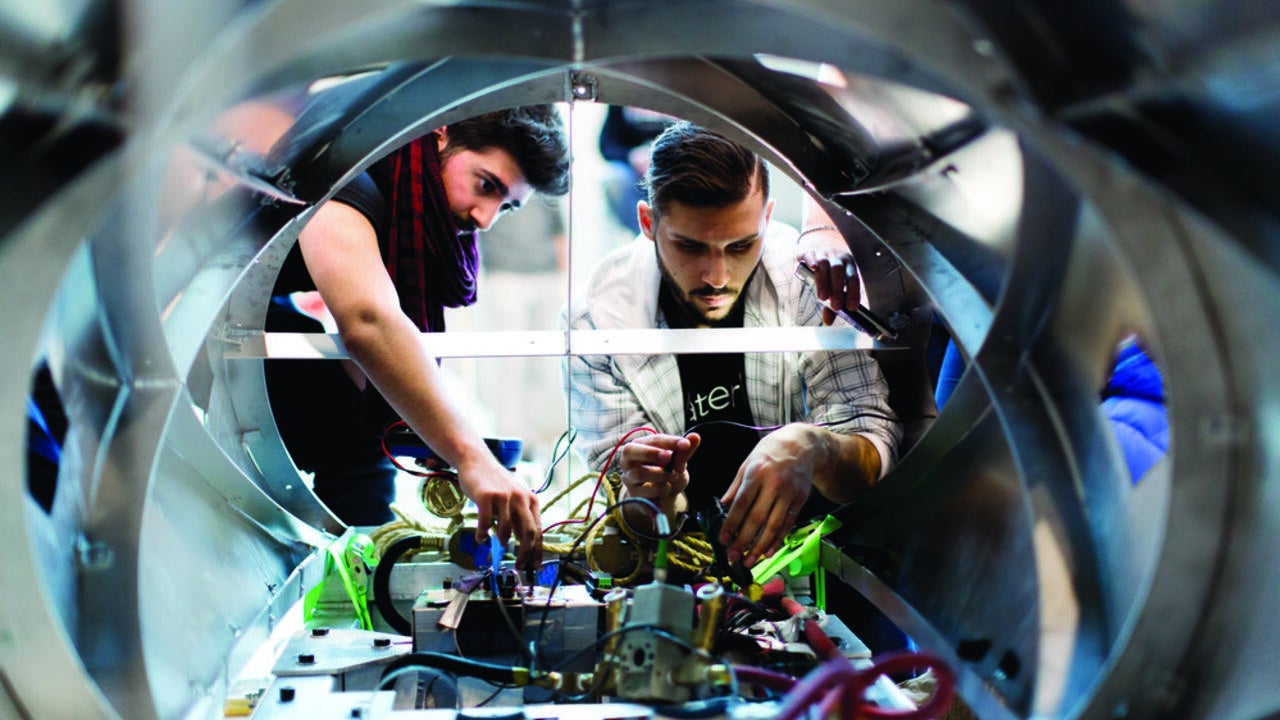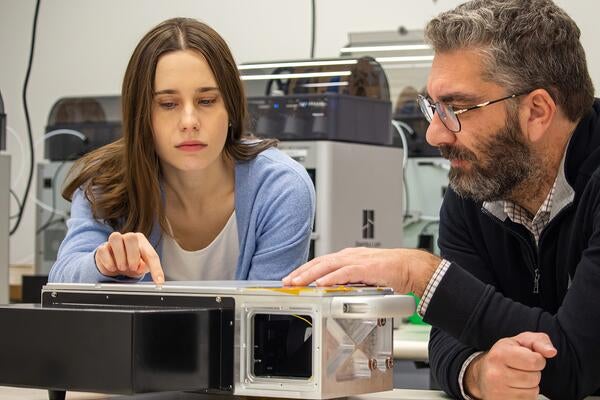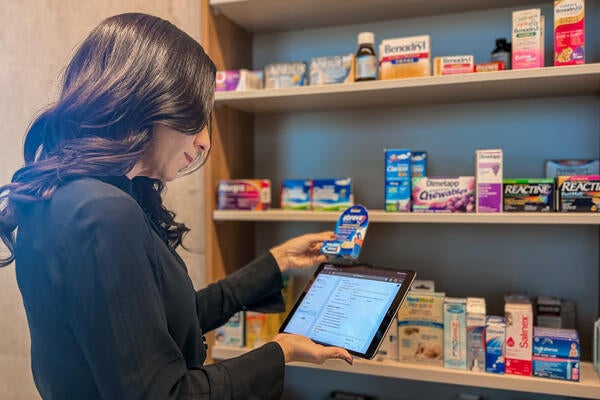
Waterloop is building a faster pod to reach speeds of 300+ km/hr
The Waterloop team is looking for a high-speed test track and community support as it prepares for Elon Musk’s 2018 Hyperloop Pod competition in California

The Waterloop team is looking for a high-speed test track and community support as it prepares for Elon Musk’s 2018 Hyperloop Pod competition in California
By Natalie Quinlan University RelationsThe Waterloop team is on its way to building a faster, lighter and more sophisticated pod. So fast, they estimate passengers could one day travel from Waterloo to Toronto in a mere six minutes.
Having formerly used a levitation system that would allow the pod to travel completely frictionless, the student design team has moved to a different method to enhance speed.
“We used to use the magnetic wheels for propulsion mainly, but now we’re going to be using friction propulsion, which is going to be a really big modification that will take us to a speed of 300 kilometres per hour and beyond,” said Ruslan Nikolaev, a third-year computer science student.
It takes innovative minds from a variety of academic backgrounds to make the concept work. While the largest number of team members come from Engineering and Architecture programs, Waterloop is comprised of 90 students from all six faculties within the University. The Faculty of Engineering provides staff, funding, equipment and mentoring support for the project all year round.
“Practically all of us are doing it alongside our studies, Masters or co-op terms,” said Nicholas Jelich, a science and business student who is Waterloop’s sponsorship lead. “I could not have asked for a better team. All of us are incredibly experienced from very diverse backgrounds, both academically and just in general from a personality perspective.”
Even with busy student schedules, the team finds time to remain competitive at international competitions. In August 2017, Waterloop was one of 24 teams selected from 3,000 submissions to compete in the Hyperloop competition sponsored by SpaceX CEO Elon Musk. With the 2018 summer races around the corner, Waterloop hopes to race again, breaking down their GOOSE II model in preparation to build GOOSE III, a faster, more efficient product that will reach subsonic speeds. The whole process starts in January.
“A lot of what we’re going to be doing is cannibalizing our old pod and rebuilding it from scratch,” said Jelich. “What we’re going to be looking for is a test facility this coming January with some sort of large test track so we can do high-speed testing. We’re looking forward to going maybe about 300 kilometres per hour if not faster.”
Sandra Banks, vice-president university relations, was an early supporter of the team and remains committed to supporting student ventures both from an advisory and promotional capacity.
“We are proud of all our student design teams that compete nationally and internationally,” said Banks. “Waterloop shines as a beacon for the University because the team represents all faculties and showcases its ambition to invent the future of transit on a world stage.”
People who want to support Waterloop can visit their donation or website’s contact page and be connected with one of their members. The team is looking for cash donations and industry professionals willing to share expertise as they build a pod that could cost $250,000.
“Having industry sponsors who are able to share their expertise would be really beneficial,” said Nikolaev. “We also still need sponsors to help us fund the team overall.”

Read more
New medical device removes the guesswork from concussion screening in contact sports using only saliva

Read more
Phantom Photonics’ quantum remote sensing technology offers precision for industries operating in extreme environments

Read more
New platform helps pharmacists prescribe with confidence, streamline administrative tasks and improve patient outcomes
The University of Waterloo acknowledges that much of our work takes place on the traditional territory of the Neutral, Anishinaabeg, and Haudenosaunee peoples. Our main campus is situated on the Haldimand Tract, the land granted to the Six Nations that includes six miles on each side of the Grand River. Our active work toward reconciliation takes place across our campuses through research, learning, teaching, and community building, and is co-ordinated within the Office of Indigenous Relations.